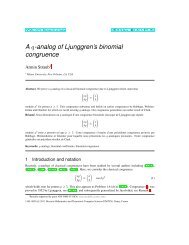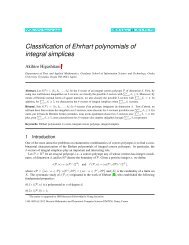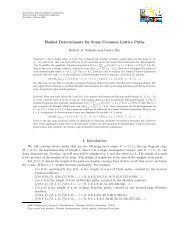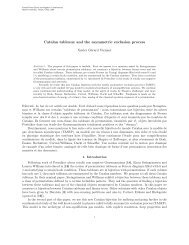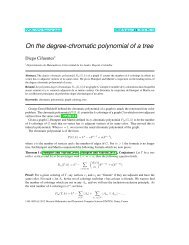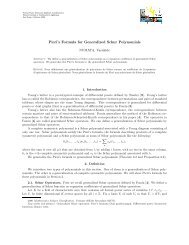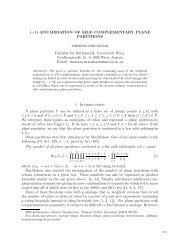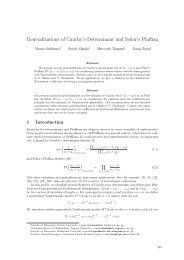Euler's partition theorem and the combinatorics of -sequences
Euler's partition theorem and the combinatorics of -sequences
Euler's partition theorem and the combinatorics of -sequences
Create successful ePaper yourself
Turn your PDF publications into a flip-book with our unique Google optimized e-Paper software.
The l-nomial coefficient<br />
Example<br />
( n (l)<br />
=<br />
k) a(l) n a (l)<br />
n−1 · · · a(l)<br />
n−k+1<br />
a (l)<br />
k<br />
a(l) k−1 · · · a(l) 1<br />
.<br />
( 9<br />
4<br />
) (3)<br />
=<br />
2584 ∗ 987 ∗ 377 ∗ 144<br />
21 ∗ 8 ∗ 3 ∗ 1<br />
= 174, 715, 376.<br />
Theorem [Lucas 1878]<br />
( n<br />
) (l)<br />
k is an integer.<br />
like Fibonomials, e.g. Ron Knott’s web page:<br />
http://www.mcs.surrey.ac.uk/Personal/R.Knott/Fibonacci/Fibonomials.html



